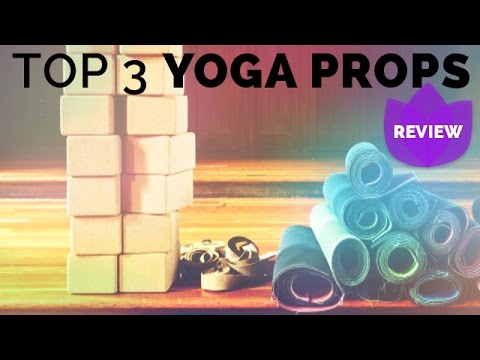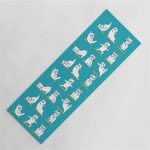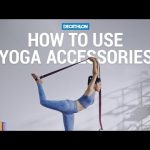The Ultimate Guide to Essential Yoga Equipment: From Basics to Advanced Tools
Yoga is a transformative practice that unites body, mind, and spirit. Whether you’re just starting out or are an experienced practitioner, having the right equipment can enhance your practice, improve alignment, and deepen your experience. This guide will take you through a comprehensive list of yoga essentials and advanced tools, offering tips on selecting the best gear for your personal needs and goals.
Introduction: Why Yoga Equipment Matters
While yoga is often associated with minimalism and simplicity, the right equipment can play a vital role in ensuring comfort, safety, and effectiveness. For beginners, essential yoga gear provides the necessary support for proper alignment, which is crucial for preventing injury and fostering balance. More advanced practitioners can use specialized equipment to deepen poses, experiment with variations, and optimize performance. Choosing the right equipment, however, depends on your practice style, personal needs, and fitness level.
Key Concepts: Understanding Yoga Equipment Essentials
- Functionality: How different tools support various yoga styles and poses.
- Material Quality: Why sustainable and durable materials matter.
- Versatility: The importance of multipurpose tools for a varied yoga practice.
- Comfort: Ensuring that equipment enhances, rather than hinders, your practice.
1. Yoga Mat
The most basic and essential piece of equipment, the yoga mat provides traction, cushioning, and a clean surface for your practice. While any mat can suffice for beginners, serious practitioners should consider the material, thickness, and stickiness of their mat to suit their style of practice.
- Standard Size: 24 inches wide and 68 inches long.
- Thickness: Thicker mats (5-6mm) are better for cushioning, while thinner mats (1-3mm) offer better stability.
- Material: Common options include PVC, rubber, and eco-friendly materials like TPE or cork.
2. Yoga Blocks
Yoga blocks are crucial for beginners and advanced practitioners alike. They offer support in difficult poses and help in achieving proper alignment. Blocks are especially helpful for modifying poses and gradually deepening flexibility.
- Material: Usually made from foam, cork, or wood, each offering different levels of firmness.
- Standard Dimensions: 9 x 6 x 4 inches.
- Uses: Supporting seated postures, balancing poses, and bridging the gap in flexibility.
3. Yoga Straps
Yoga straps are helpful tools for increasing flexibility and maintaining alignment, particularly for poses that require reaching or binding. Straps allow you to gradually work on poses without overstretching.
- Material: Typically made from cotton or nylon.
- Length: 6 to 10 feet long, depending on your needs.
- Uses: Assisting in forward bends, shoulder stretches, and poses requiring extended reach.
4. Yoga Bolsters
Bolsters are cushions used in restorative poses to provide support, encourage relaxation, and reduce strain on muscles and joints. They’re often used in meditative or restorative practices where deep, slow stretches are required.
- Shapes: Available in rectangular and cylindrical forms.
- Uses: Support in reclining postures, seated stretches, or deep restorative poses.
- Material: Usually filled with cotton, buckwheat hulls, or synthetic fibers.
Historical Context: Evolution of Yoga Tools
Historically, yoga was practiced with little to no equipment, relying on the natural environment. Early yogis practiced on grass or animal skins, using their bodies to support poses. The development of yoga mats, blocks, and straps is a relatively modern innovation aimed at making yoga more accessible to the general public.
| Era | Yoga Equipment | Purpose |
|---|---|---|
| Pre-1900s | Animal skins, grass | Natural insulation and grounding |
| 1950-1980s | Basic mats and wooden props | Introduction of support tools for modern yogis |
| 1990s-present | Eco-friendly materials, variety of props | Focused on sustainability and accessibility |
Current State Analysis: Popular Yoga Gear in the Market
The modern yoga market is filled with options, ranging from budget-friendly essentials to high-end, eco-friendly alternatives. The rise of sustainable materials like cork, bamboo, and natural rubber reflects the growing trend of environmentally-conscious consumption. Brands are also innovating by offering ergonomic designs that cater to a wide range of yoga styles, from Hatha to power yoga.
- Sustainability: Growing focus on eco-friendly and non-toxic materials.
- Customization: Brands are now offering personalized yoga mats, blocks, and straps to cater to individual needs.
- Technology Integration: Some brands offer smart mats that track posture and alignment in real-time.
Practical Applications: Choosing the Right Equipment for Your Yoga Style
- Hatha Yoga: Requires standard mats, blocks, and straps for maintaining alignment in static poses.
- Vinyasa Yoga: A thinner mat for better stability during dynamic transitions. Blocks and straps may also be useful.
- Restorative Yoga: Bolsters, blankets, and eye pillows are crucial for comfort and support.
- Power Yoga: A high-traction mat to prevent slipping during vigorous sequences.
Case Studies: Success Stories from Different Yoga Communities
To understand the impact of using proper yoga equipment, let’s examine a few cases where the right tools made a difference in practice:
| Community | Challenge | Solution | Outcome |
|---|---|---|---|
| Senior Yoga Class | Lack of flexibility and joint pain | Use of blocks and bolsters for support | Improved participation and reduced discomfort |
| Advanced Vinyasa Group | Difficulty maintaining balance in flowing sequences | High-grip mat and strap assistance | Enhanced stability and deeper poses |
| Beginner Yoga Workshop | Fear of overstretching and injury | Introduction of straps and foam blocks | Increased confidence and gradual improvement |
Stakeholder Analysis: How Different Groups Benefit from Yoga Equipment
Yoga equipment not only impacts individual practitioners but also influences instructors, yoga studios, and equipment manufacturers. Here’s a breakdown of how different stakeholders benefit:
- Yoga Practitioners: Improved alignment, reduced risk of injury, deeper stretches.
- Instructors: Easier to guide students with different skill levels and needs.
- Yoga Studios: Attracts diverse clientele by offering various props for all skill levels.
- Manufacturers: Growing demand for sustainable, durable, and affordable equipment.
Implementation Guidelines: How to Incorporate Yoga Equipment into Your Practice
Integrating yoga equipment into your routine is simple if you follow these steps:
- Start with the basics: A mat, block, and strap are essential for beginners.
- Build slowly: As you progress, add more specialized tools like bolsters, blankets, and wheels.
- Listen to your body: Use props to adjust poses that feel too challenging or to deepen stretches safely.
- Explore variety: Don’t be afraid to experiment with different equipment to discover what works best for your unique practice.
Ethical Considerations: Sustainability in Yoga Equipment
With the rising popularity of yoga, the production and consumption of yoga equipment have increased significantly. This brings up important ethical considerations:
- Environmental Impact: Avoid PVC and opt for natural or recycled materials like cork or jute.
- Labor Practices: Support companies that prioritize fair labor practices and avoid exploitative manufacturing.
- Overconsumption: Be mindful of buying only the equipment you need, and avoid unnecessary excess.
Limitations and Future Research: What’s Next for Yoga Equipment?
While yoga equipment has come a long way, there are still areas for improvement:
- Smart Technology: Exploring how smart mats and sensors can improve alignment and injury prevention.
- Custom-Fit Equipment: Advancements in personalized gear tailored to individual body types and yoga styles.
- Sustainability: Continuing to innovate with biodegradable materials and reducing the carbon footprint of manufacturing processes.
Expert Commentary
Yoga teachers and experts agree that the right tools can significantly enhance both the safety and effectiveness of your practice. While there is no “one-size-fits-all” approach to yoga equipment, understanding your personal needs and the specific demands of your practice style is key to making informed decisions. Whether you’re using a simple mat or exploring more advanced props, yoga equipment is an investment in your physical and mental well-being.







